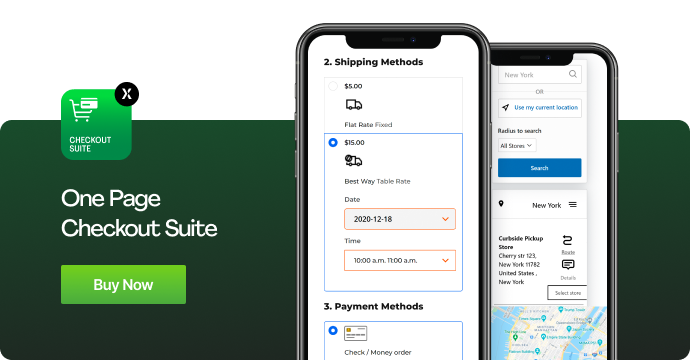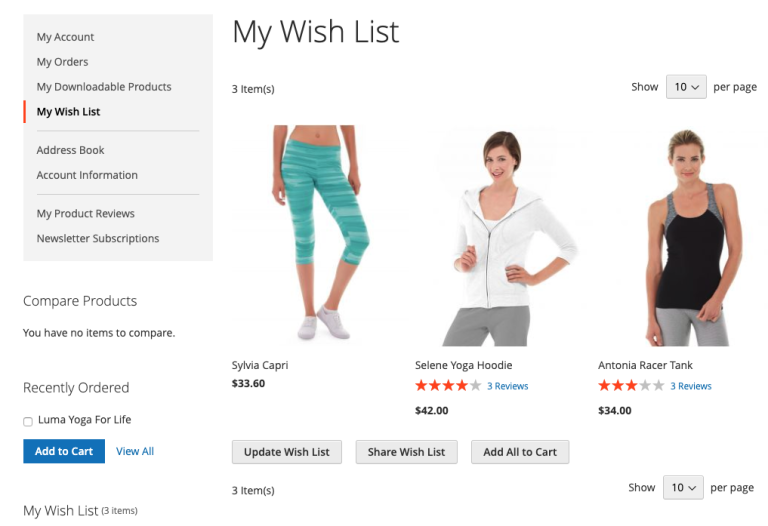
Reading Time: 6 minutes
Apart from the main eCommerce platform, Amazon now has a robust mobile app and several physical stores. Their customers can also complete purchases using Alexa devices. Others even do so using smartwatches, Kindle e-readers, and other devices. But is it the availability of multiple channels that makes the company’s omnichannel strategy effective? Not quite. The key is that users engage with the store using a single account, no matter what device they choose to use. And, they can expect a seamless transition between each one.
Offering an omnichannel experience is critical if you want to compete in a crowded market. It sets you apart from your competitors because you’re able to foster more personal connections with your target audience. That keeps your brand relevant and better able to develop relationships with lifelong customers.
Omnichannel eCommerce is the gold standard for running a business in today’s digital environment. It is the best way to ensure excellent customer service and superior user experiences. These lead to a positive brand image, better sales, and impressive customer retention rates.

For example, your retail business might have an eCommerce platform as well as several brick-and-mortar stores. You might also have social media accounts and email campaigns to support those retail outlets. Through an omnichannel approach, a customer can encounter a product via email and buy it from your online store. Then, they can get support through your Facebook page and return the item to a physical store.
Omnichannel Ecommerce: What is it?
To make the most of user-generated content, you’ll first need to get your customers to create it. This can be in the form of simple product reviews after buying from your store. If you display beautiful product feedback on your sales pages, other customers are more likely to proceed with a purchase.
Corporate social responsibility can definitely work as a marketing strategy. However, it is essential to support causes with sincerity. Today’s empowered consumers value authenticity and will quickly shun a brand they deem insincere. It is also critical to embrace your chosen cause wholeheartedly, create content around it, and use it to build a community around your brand. If done correctly, this can anchor your entire omnichannel strategy.
Omnichannel marketing strategies are techniques that enable businesses to offer a cohesive shopping experience. This is true no matter how customers choose to interact with their brand. It is a customer-centered approach to business that leads to stronger customer loyalty. It leads to higher customer lifetime values and, ultimately, better sales.
What is an Omnichannel Strategy?
You will be able to do so across all channels and throughout the entire customer journey. Armed with the right marketing automation tool, these tips for effective omnichannel implementation will enable you to beat your competitors. Furthermore, these will help you nurture your audience to become lifelong customers.
Table of Contents
Why is Omnichannel Important?
Knowing all this, it is crucial that you optimize your mobile site. Nowadays, optimizing for mobile isn’t just about having a responsive website but an actual mobile-first design. That means presenting all the important content in a way that makes the most out of smaller screens. Additionally, a good mobile website is uncluttered and easy to navigate. Most importantly, it moves visitors along the customer journey despite the screen limitations.
This unique social media presence has enabled it to amass a loyal following. This brand image has allowed Wendy’s to remain relevant, especially to younger audiences. That means a lot given the hyper-competitive space of fast food and burger joints.
What is an Omnichannel Example?
Part of developing a personal connection with your audience is giving them something to feel a connection to. Avoid being a faceless brand. Instead, create a unique personality that makes your business more human and relatable. This is especially useful in industries where products are so similar. Your brand personality is what will enable you to set yourself apart from your competitors.
Much of omnichannel marketing is driven by smartphone penetration. Today, a huge part of the customer journey occurs on a mobile device. Most people still prefer completing their purchases on their desktops and laptops. But, much of the research and window-shopping stage is done on mobile apps. A recent eMarketer report has also revealed that almost half of eCommerce sales in 2022 are expected to come from mobile devices.
Tips for an Effective Omnichannel Strategy
Crafting the best omnichannel strategy would depend on the nature of your business. A lot also depends on the channels on which you engage and the general behavior of your target audience. Even so, here are several best practices that work for any business:
Let Your Brand Personality Shine
Omnichannel eCommerce is a response to modern consumer’s shopping behaviors. People now use several channels not only to influence their buying decisions but also to actually complete their purchases. In fact, according to Google research, 90% of people shuffle between an average of three different devices to complete their tasks. These customers expect businesses to engage with them on the channels of their choosing. Furthermore, they expect their personalized experience to be consistent from one channel to the next.
Omnichannel eCommerce starts with having a presence on several platforms. But, it doesn’t end there. A truly omnichannel business strives to give every customer a seamless experience across all the platforms it uses. Essentially, you provide different ways for your audience to interact with your brand. But you also have to make sure they can pick up from one where they left off with the other.
If you have a worldwide audience, it’s critical to offer localized content. According to 90 Seconds, customers are six times more likely to engage with content that is targeted for their location. By localizing content across all your channels, you help every visitor feel closer to your brand. So, you make them more likely to trust and support your business.
Align Your Omnichannel Business with a Cause
Looking at how businesses are run nowadays, it’s easy to find excellent omnichannel strategy examples. But perhaps none has approached this quite as massively as Amazon. Amazon began with a single eCommerce platform. Today, its millions of customers are able to shop through different devices.
Omnichannel marketing strategies will enable you to provide excellent customer experiences.
In other words, being omnichannel is not about the channels at all. The channels merely enable you to achieve your actual goal, which is to provide the most delightful interactions with your brand. This makes customers more likely to spend more on your business and even recommend you to their own networks.
Be as Localized as Possible
Promos and discounts might seem like an old-fashioned marketing ploy. Yet, they’re still among the most effective tactics you can use, especially for people purchasing online. According to Invesp, digital coupons still influence the buying decisions of 59% of consumers. Additionally, discounts and free shipping offers have enough power to sway an indecisive customer.
Implementing omnichannel marketing strategies might seem daunting. Given the intensive focus on personalized experience, it might even seem impossible. But before you get overwhelmed, know that there are now advanced tools to automate your marketing. Your role is to decide on the best channels for your business and develop the strategies to implement them. To do that, you’ll first need a good understanding of what an omnichannel business is and the best ways to market it.
Optimize Your Mobile Site

For discounts and other offers to be even more effective, it pays to let your customers feel the fear of missing out and do so across all your channels. Set expiry dates for all your offers in order to communicate urgency. You can also use product countdown timers. Such tools help eliminate indecision and drive customers to act fast.

Image credit: Statista
Take Advantage of User-Generated Content
This is a guest article by Katrina V. Dayrit from Omnisend.
Buying guides are curated collections of products. These are meant to simplify your customer’s decision-making process. Many companies create these as part of their loyalty program. Others use it as email newsletter content, or a means to drive traffic to online stores. Either way, creating targeted buying guides is one of the best ways to upsell and increase your average order value.
Additionally, there are ways for you to incentivize content creation around your brand. Some do this by hosting competitions. Others involve their audience in a mission. Such activities will not only leave you with plenty of user-generated content to use for marketing. It will also boost engagement across all your platforms.
Create Highly Targeted Buying Guides
Image Source: eMarketer
According to NielsenIQ, 56% of global consumers are willing to pay more to support companies committed to the social values they share. Among millennials, over 90% say would easily switch brands if one is associated with a cause they want to support. That’s according to a Cone Communications CSR study. The same study showed that 66% of this age group will likely use social media to engage with brands about social and environmental causes.
Make Good Use of Promos and Discounts
About the author:

Wrap Up
Katrina is a writer for Omnisend. She is a freelance content writer who specializes in eCommerce and digital marketing subjects. Beyond her workstation, she is a devoted dog mom.
Localizing content isn’t just about publishing prices in a visitor’s local currency or even their local language. You’ll need to go beyond that by taking the time to learn about those markets as specific customer segments. That will enable you to craft tailor-made content and make every customer’s experience much more personalized.
According to the Stackla Consumer Content Report, as much as 86% of consumers value authenticity when deciding on brands to support. Of them, 60% say that user-generated content is the best way to make customers feel like you’re an authentic brand.
In an omnichannel business, it’s critical for buying guides to be targeted and personalized. The best way of segmenting your customers will depend on the nature of your business. You might do so by demographics, buying behavior, or even personality. Your segmentation strategy should also consider the platforms every segment prefers. Make sure you accommodate those preferences to make the most of your buying guides.






